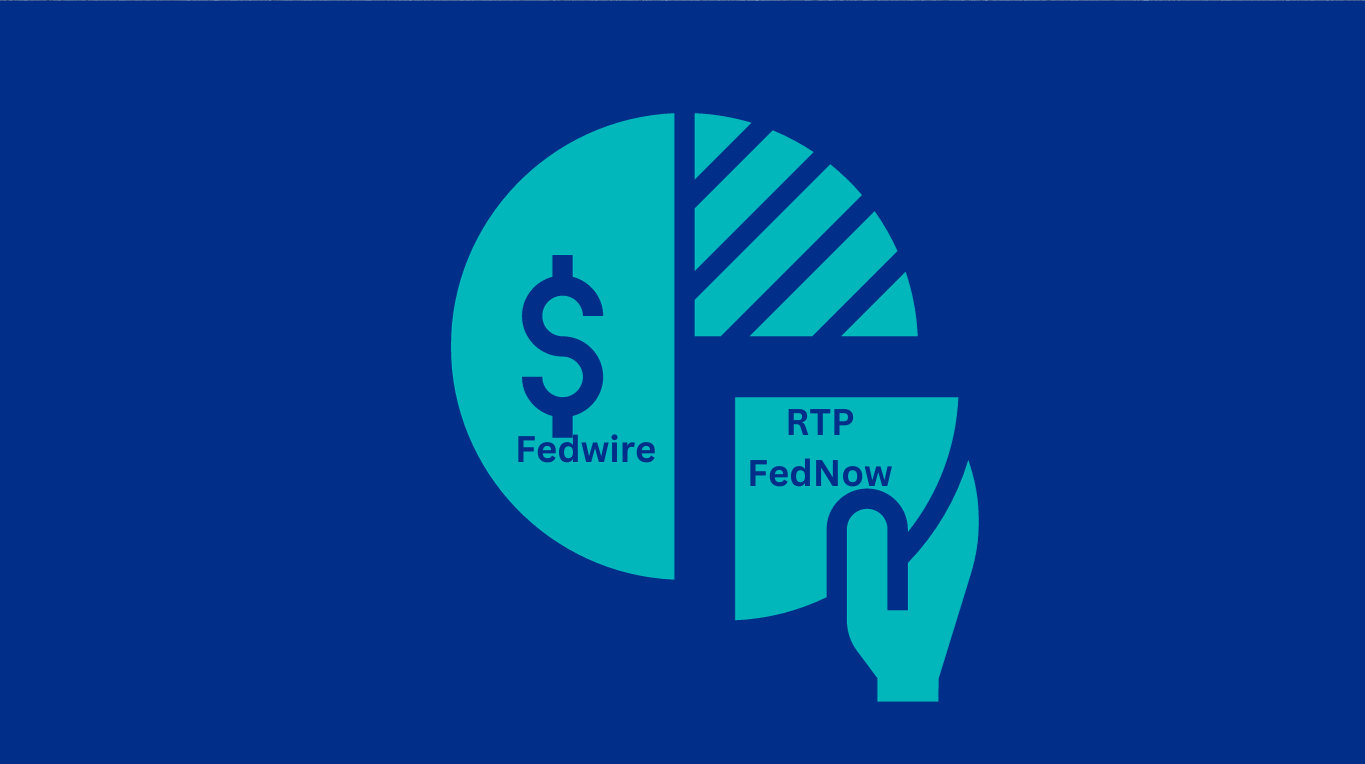
When Banks Merge, Payments Get Messy. Here’s How to Keep Them Moving.

Nine out of ten banks venturing into adopting instant payments have a persistent concern about the potential impact on their Fedwire revenue caused by FedNow® and RTP®. However, there are several compelling reasons why this worry might not be as significant as it seems.
Comparing Fedwire and instant payments is like weighing a bicycle against a rocket. They're fundamentally different, designed for different journeys, serving distinct purposes in the grand scheme of payments. While the question of substitution lingers, it's crucial to recognize the indispensable niche Fedwire occupies.
Fedwire has been the go-to for large-dollar business payments (above $100k), scenarios with a low transaction volume, and payments that are time-critical. In the United States, the Fed ACH provides same or next business day payments on a batched basis for low-value transactions, whereas the Fedwire RTGS system ensures "immediate, final, and irrevocable" payments for high-value transactions, albeit at higher costs and with availability on a 21/5 schedule.
Why shouldn't banks lose sleep over Fedwire revenue being cannibalized by instant payments?
1. The use cases they power are diverse
The use cases for Fedwire and instant payments are typically distinct. Financial institutions and major businesses utilize Fedwire for settling money market and foreign exchange transactions, corporate high-value, and time-sensitive payments, as well as property transactions. Its use by consumers is limited, primarily for significant transactions such as purchasing a car or making a house deposit. At this point, notable use cases for instant payments in many geographies are still focused on P2P and bill payments, making the use cases for the two rails significantly different.
2. Fedwire playing in the major league with transaction limits
With a staggering cap of $9,999,999,999.99, Fedwire is in the big leagues for high-value transactions, even though banks can set their own limits. In a financial landscape where critical business transactions involve high $ value, Fedwire proudly holds its position as the heavyweight champion. However, given that the limit for FedNow is $500,000, and RTP is $1M, they cannot serve the purpose for wholesale and high-value transactions.
3. Learning from across the pond
The rollout of the UK's instant payment system didn't throw its Fedwire equivalent, CHAPS, off balance. Despite the instant payment surge, CHAPS, BACS (ACH equivalent), and card volumes stood their ground. Why? Each of them has a distinct role in the financial narrative in terms of the use cases they serve the ecosystem.
4. Transaction values: Apples meet oranges
Trying to compare FedNow's $500,000 limit with the average Fedwire transaction value of $5 million is like trying to compare apples and oranges. They're just different, catering to widely different needs in the financial ecosystem.
5. ISO 20022 migration to bring more opportunities for Fedwire
With a makeover that incorporates ISO 20022 messaging structures for Fedwire scheduled by March 2025, financial institutions are gearing up to introduce additional value-added services alongside Fedwire transactions. As they modernize their wire processing systems, they are fortifying Fedwire's role as a cornerstone for high-value transactions. There is also potential to extract more value from the rich payment data accompanying these transactions once they transition to the new format. This evolution complements their instant payment counterparts, which have given rise to new use cases for both businesses and consumers.
6. Businesses are ready to embrace the cost of wire transactions
Certainly, Fedwire comes with a price tag around £20 ($31) per CHAPS transaction in the UK or a $20 - $40 fee for Fedwire transactions in the US. However, businesses are not just accepting it; they're willingly embracing it for the speed, convenience and finality of these transactions. They understand that high-value payments come with a cost, and they're ready to invest for seamless transactions.
In a landscape where instant payments are hailed as the future, Fedwire stands tall as a testament to the enduring need for a powerhouse in high-value, time-sensitive transactions. Banks hesitating on instant payment adoption, fearing a cannibalization of fee income, might want to reassess the landscape. Fedwire isn't just a legacy; it's a vital force ensuring financial institutions can instantly settle the most significant transfers.
